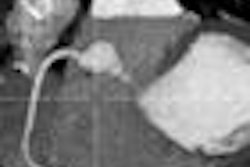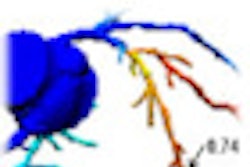It may seem intuitive enough that 64-detector-row CT is faster for multiple-casualty trauma than four-detector-row machines, but minutes make a big difference when patients are seriously injured, according to researchers of a new study in the September issue of the American Journal of Roentgenology.
Images that were ready to read in 4.1 minutes on 64-detector-row CT took nine minutes on the four-slice machine, said lead investigator Markus Körner from Munich University Hospital in Germany.
"Multiple-casualty incidents are associated with an imbalance of patients and medical resources, so a quick diagnosis, which can help determine the type of care a patient needs, is essential," Körner noted in a statement accompanying the study's release.
Radiologists can make a diagnosis almost immediately using a 64-detector-row CT scanner connected to a volume image reading station, which is crucial in providing optimal care in multiple-casualty situations, the authors concluded (AJR, September 2011, Vol. 197:3, pp. W1-W6).
The study was performed in conjunction with a simulated multiple-casualty incident. Volunteers acted as patients to the point of undergoing a CT examination, then again following the CT examination. CT examinations of the head and trunk were performed on anthropomorphic skeletons.
In volume image reading, thin-slice images sent to a 3D workstation can be reformatted in any way for reading. "We can make most major diagnoses by the time the patient's scan is completed," Körner said. "Standard 4-MDCT takes more than twice as long and by that time only produces transverse thick-slice images because the technologist has to reformat the images first on the CT workstation before sending them to a PACS for the radiologist to read."
Total examination time was about the same for both techniques, they found. Preparing patients and bringing them in for the CT scan takes the most time, and didn't vary based on scanner model. However, the time saved in processing the data, which enabled faster and more accurate image reading, was a definite advantage in the radiologic trauma workflow, Körner said.
"This acceleration of the diagnostic process might have a good effect on a patient's outcome because definitive treatment can be initiated earlier," the authors concluded.




















